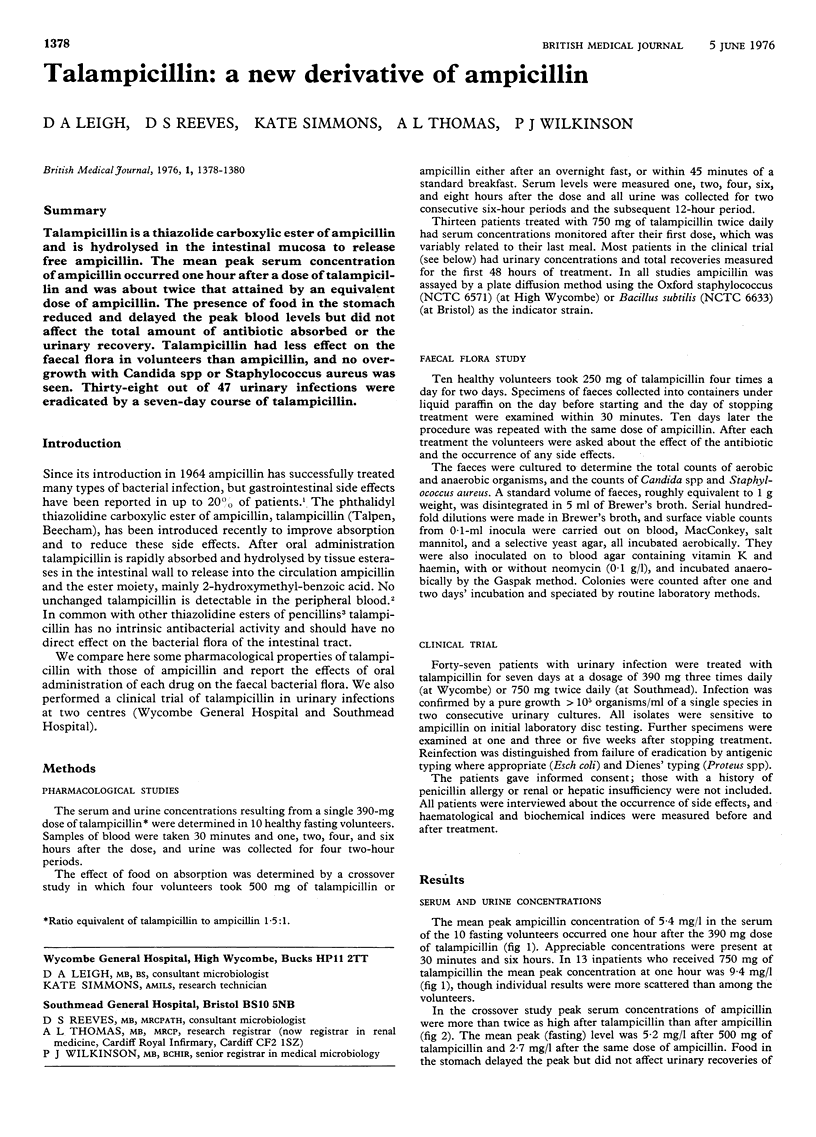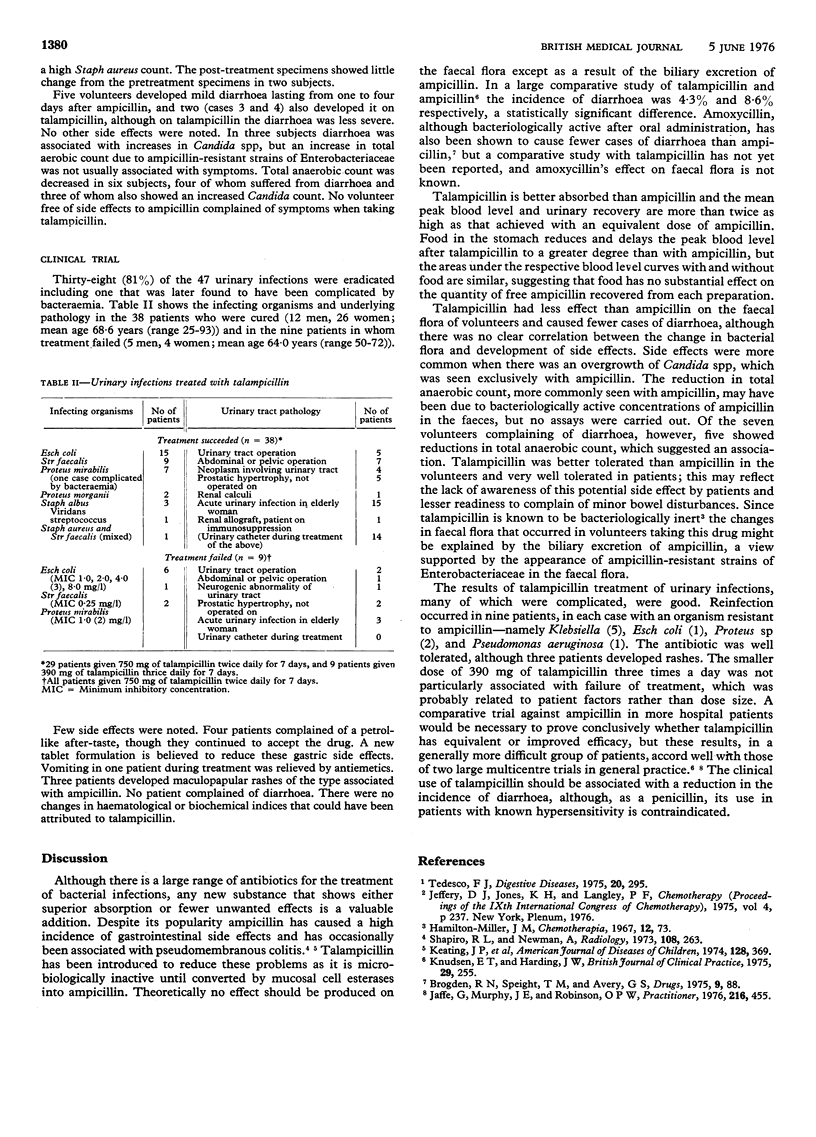Abstract
Talampicillin is a thiazolide carboxylic ester of ampicillin and is hydrolysed in the intestinal mucosa to release free ampicillin. The mean peak serum concentration of ampicillin occurred one hour after a dose of talampicillin and was about twice that attained by an equivalent dose of ampicillin. The presence of food in the stomach reduced and delayed the peak blood levels but did not affect the total amount of antibiotic absorbed or the urinary recovery. Talampicillin had less effect on the faecal flora in volunteers than ampicillin, and no overgrowth with Candida spp or Staphylococcus aureus was seen. Thirty-eight out of 47 urinary infections were eradicated by a seven-day course of talampicillin.
Full text
PDF


Selected References
These references are in PubMed. This may not be the complete list of references from this article.
- Brogeden R. N., Speight T. M., Avery G. S. Amoxycillin: A review of its antibacterial and pharmacokinietic properties and therapeutic use. Drugs. 1975;9(2):88–140. doi: 10.2165/00003495-197509020-00002. [DOI] [PubMed] [Google Scholar]
- Jaffé G., Murphy J. E., Robinson O. P. A comparative study of talampicillin and ampicillin in general practice. Practitioner. 1976 Apr;216(1294):455–460. [PubMed] [Google Scholar]
- Knudsen E. T., Harding J. W. A multicentre comparative trial of talampicillin and ampicillin in general practice. Br J Clin Pract. 1975 Oct;29(10):255–passim. [PubMed] [Google Scholar]
- Schapiro R. L., Newman A. Acute enterocolitis. A complication of antibiotic therapy. Radiology. 1973 Aug;108(2):263–268. doi: 10.1148/108.2.263. [DOI] [PubMed] [Google Scholar]


